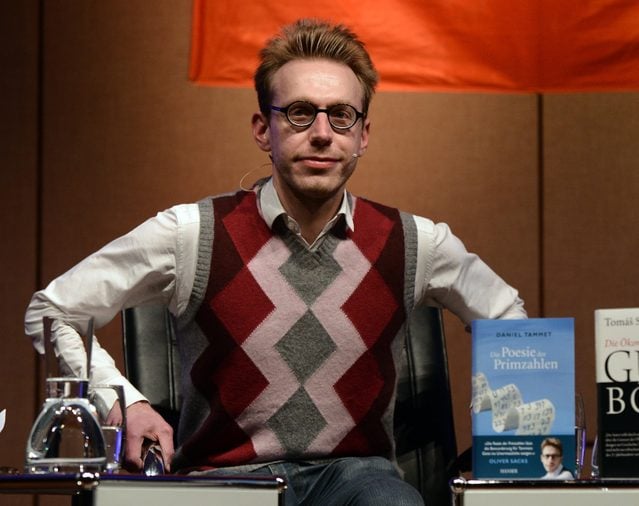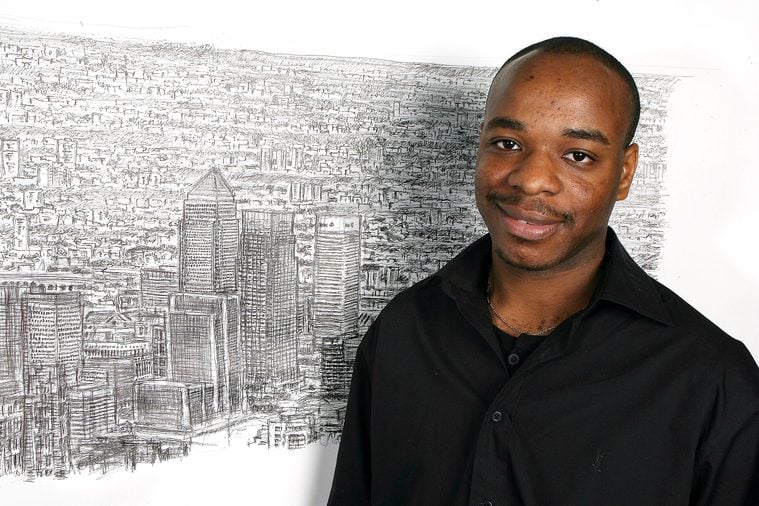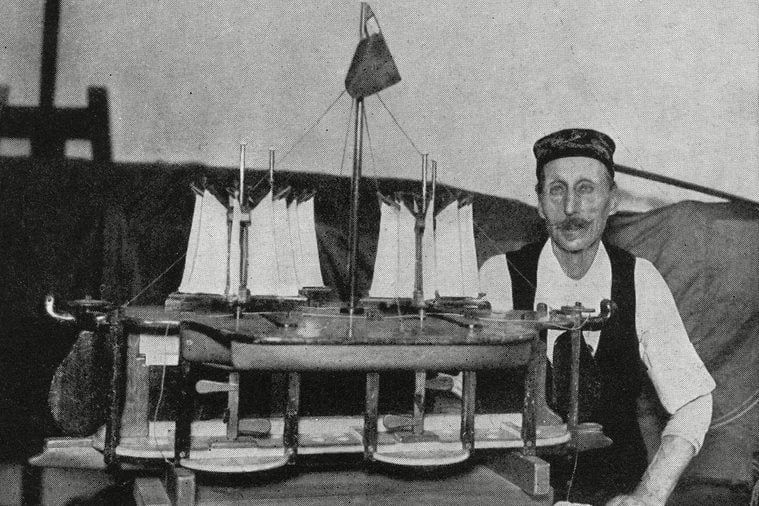10 True Stories About Autistic Savants
Updated: Jun. 29, 2022
A savant is someone who possesses extraordinary skills. For reasons not quite understood yet people with autism are more likely to have such abilities.
What does it mean to be an “autistic savant”?
 The term “autistic savant” refers to someone on the autism spectrum who possesses extraordinary skills not exhibited by most persons, according to the Autism Research Institute. About 10 percent of the autistic population have savant abilities, compared with 1 percent of the general population. Savant abilities come in many forms. The most common involve mathematics (such as being able to perform difficult equations in one’s head), memory (such as being able to recite a speech after hearing it once), and artistic/musical ability. Perhaps most fascinating of all: No one knows why or how savant abilities emerge.
The term “autistic savant” refers to someone on the autism spectrum who possesses extraordinary skills not exhibited by most persons, according to the Autism Research Institute. About 10 percent of the autistic population have savant abilities, compared with 1 percent of the general population. Savant abilities come in many forms. The most common involve mathematics (such as being able to perform difficult equations in one’s head), memory (such as being able to recite a speech after hearing it once), and artistic/musical ability. Perhaps most fascinating of all: No one knows why or how savant abilities emerge.
Richard Wawro: Accomplished artist
Diagnosed with autism at the age of three, Richard Wawro (1952-2006) began to show an immense talent for drawing very early. A renowned international artist saw drawings Wawro had completed before age 12 and was “thunderstruck” by Wawro’s precision and vision. Wawro had his first art exhibition at 17. Over the years, he sold over 1,000 drawings in over 100 exhibitions, including to Margaret Thatcher and Pope John Paul II. Although savant abilities occur at a higher rate in people with autism, not all people with autism are savants—that’s just one of the 18 autism myths that everyone needs to stop believing.
The Lyman Twins: Incredible memory
Flo and Kay Lyman are 50-something identical twin sisters with identical autism diagnoses—and the identical ability to remember almost everything. They can tell you the day of the week for any date, past or future (this is known as “calendrical savantism“). For any day of their lives, they can remember the weather and what they ate. “The more that they can create order, the more secure they feel,” psychologist David Holmes, PhD, explained to DailyGrail. The sisters have been the subject of several documentaries, including The Rainman Twins: Extraordinary People.
Daniel Tammet: Human calculator
 Daniel Tammet is a genius who’s memorized Pi to more than 22,500 digits, speaks 11 languages, and can multiply enormous sums in his head in a matter of seconds, according to Psychology Today. Although Tammet also battles many of the behaviors linked to autism—an aversion to eye contact, for example, and obsessive ritualistic behaviors—he’s been able to overcome many of them so that he can more easily interact with others.
Daniel Tammet is a genius who’s memorized Pi to more than 22,500 digits, speaks 11 languages, and can multiply enormous sums in his head in a matter of seconds, according to Psychology Today. Although Tammet also battles many of the behaviors linked to autism—an aversion to eye contact, for example, and obsessive ritualistic behaviors—he’s been able to overcome many of them so that he can more easily interact with others.
Thomas Wiggans: Piano virtuoso
Born into slavery in 1849, Thomas Wiggans was both blind and nonverbal, but as a toddler he began spontaneously playing piano and by age three was performing complex symphonies. Eventually, Wiggans could play two songs on two different piano while singing a third, according to Autistic and Unapologetic; the website reports: “The subject of countless books, various TV programs, and one Elton John song, Wiggans will perhaps be remembered best as the first African American to perform in the White House.” Learn the 14 things experts wish people realized about autism.
Matt Savage: Jazz pianist
Now 26, Matt Savage is a talented jazz pianist who began his studies at the New England Conservatory of Music when he was only seven. He has recorded 13 studio albums and played with some of the biggest names in jazz, including Dave Brubeck, Chick Corea, and Wynton Marsalis. That’s an incredible resume for anyone—but especially for Savage who, at age three, was diagnosed with a form of autism that gave him a crippling aversion to sound. Savage used the study of music as a coping mechanism and continues to do so.
Stephen Wiltshire: Sketch artist
 Diagnosed with autism and unable to speak, Stephen Wiltshire was sent to a school for special needs children. Once there, he developed a passion for drawing—first animals, then buses, then buildings and city landmarks, according to Neatorama. Over time, Stephen’s fervor for drawing emerged as a striking talent: He can draw a completely accurate, detailed landscape of a city after seeing it only once. In 2014, he painted a bird’s eye view of Singapore after seeing it for only 20 minutes via helicopter.
Diagnosed with autism and unable to speak, Stephen Wiltshire was sent to a school for special needs children. Once there, he developed a passion for drawing—first animals, then buses, then buildings and city landmarks, according to Neatorama. Over time, Stephen’s fervor for drawing emerged as a striking talent: He can draw a completely accurate, detailed landscape of a city after seeing it only once. In 2014, he painted a bird’s eye view of Singapore after seeing it for only 20 minutes via helicopter.
Mary Meinel Newport: Musical phenomenon
Labeled “difficult” as a child, Mary Meinel would scream whenever she heard music played out of tune. At the same time, she could pick up any instrument and play it without instruction; she also composed music and could do so backwards—from the end to the beginning. It was only as an adult that Meinel was diagnosed with Asperger’s syndrome, which is what led to her meeting the love of her life, Jerry Newport, who’d also struggled with Asperger’s for decades before being diagnosed. The film Mozart and the Whale depicts their relationship.
Leslie Lemke: Pianist
Blind, autistic, and suffering from cerebral palsy, Leslie Lemke loved listening to music. Then one night in 1966, the 14 year old sat down at a piano—without ever having had a lesson—and played Tchaikovsky’s Piano Concerto No. 1 flawlessly and completely from memory. (He’d heard it earlier on a movie soundtrack.) Lemke, who is now 67, became famous after performing on The Oprah Winfrey Show. He can hear a piece of music just once and play it back perfectly, reports Scientific American.
James Henry Pullen: The Genius of Earlswood Asylum
 “One of the earliest, and most colorful, savants was James Henry Pullen, who came to be known as the Genius of Earlswood Asylum,” reports the Wisconsin Medical Society. In 1842, at the age of seven, James, who was nonverbal, occupied himself carving little wooden ships and then reproducing them in pencil sketches. At age 15, James entered Earlswood Asylum, where his impressive carving and drawing talents fascinated everyone, including the Prince of Wales (later King Edward VII), who sent James elephant tusks to carve. “Like the other savants before and after him, Pullen was a paradox of ability and disability,” writes the Society.
“One of the earliest, and most colorful, savants was James Henry Pullen, who came to be known as the Genius of Earlswood Asylum,” reports the Wisconsin Medical Society. In 1842, at the age of seven, James, who was nonverbal, occupied himself carving little wooden ships and then reproducing them in pencil sketches. At age 15, James entered Earlswood Asylum, where his impressive carving and drawing talents fascinated everyone, including the Prince of Wales (later King Edward VII), who sent James elephant tusks to carve. “Like the other savants before and after him, Pullen was a paradox of ability and disability,” writes the Society.
Not every person with autism is a “genius.” People on the spectrum can have an IQ ranging from very low to genius level, just like every human being. But recent research has found that many of the genes responsible for high IQ are also linked to autism. If you’re interested in the link between intelligence and autism, you may find it interesting to know that of 8 people with an IQ higher than Einstein, one is autistic.














